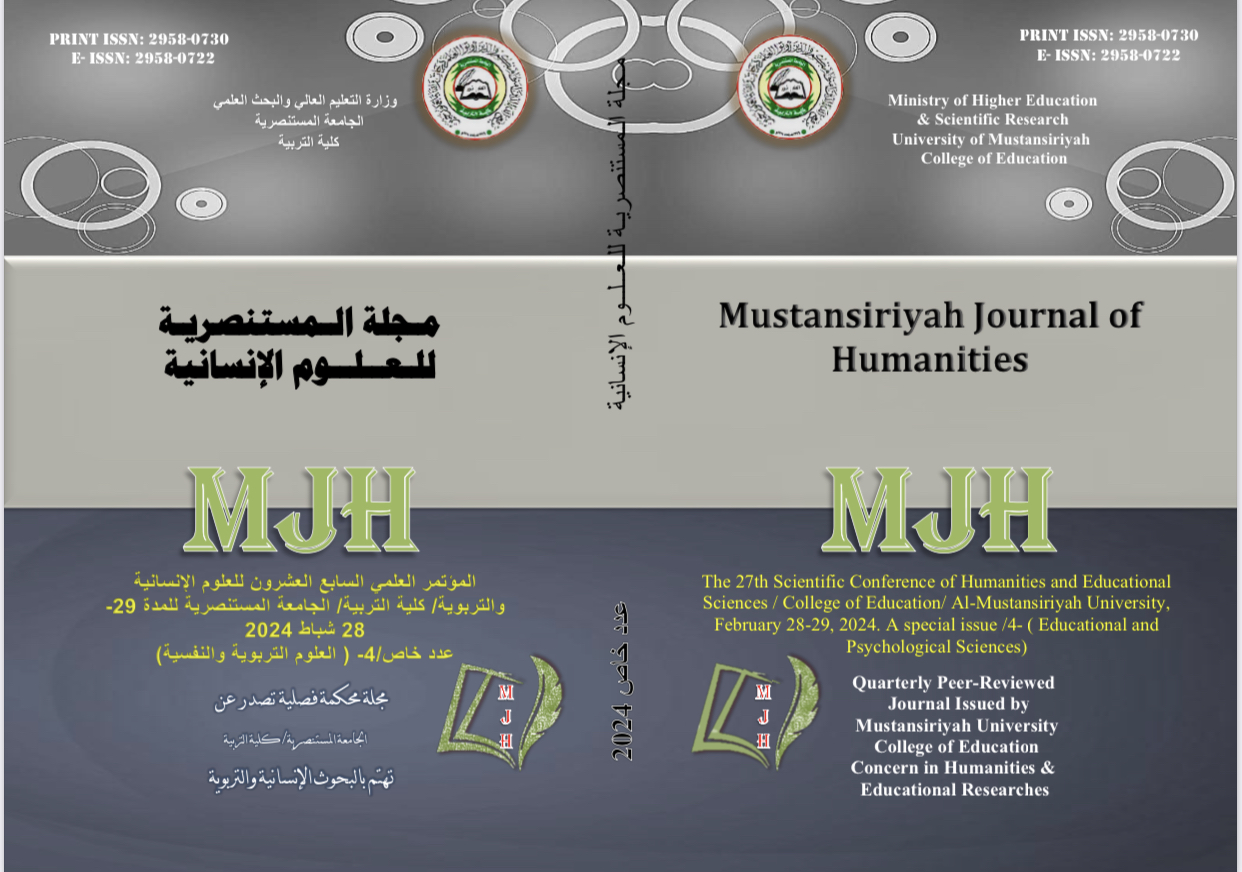Correcting the uses of statistical methods in educational and psychological research
DOI:
https://doi.org/10.47831/mjh.v4iخاص.552Keywords:
: correcting statistical methods, modifying statistical methods, incorrect methods used in researchAbstract
Due to the increasing reliance on the use of statistical methods in analyzing research data in general and educational and psychological research in particular, and the frequent occurrence of these research errors in the use of statistical methods at a time when these methods are diverse and increasing in complexity, from here emerges the problem of the current research and its importance in that it sheds light on these errors and attempts to address them from Through its goal of identifying incorrect statistical methods used in educational and psychological research. The research sample included 30 published research papers, 20 master’s theses, and 10 doctoral dissertations for the period from (2008 to 2012). To collect the necessary data for the research, a special form was designed, and its validity was confirmed by presenting it to a number of specialists, and the descriptive analytical method was used.
Analysis of the data after calculating the frequency of statistical errors revealed that the incidence of sample selection errors ranged from 70% in theses to 93% in published research. As for the error rate in using the weighted mean, it was 100% in published research and master’s theses, and this method was not used in theses. The error in using the Likert scale is 40% in dissertations, 60% in research, and 80% in dissertations. The error rate for using the T-test for one sample was 80% in published research and 100% in dissertations and dissertations, while the error rate for using the T-test for two independent samples was 30% in research, 60% in dissertations, and 80% in dissertations. The percentage of error in using the Pearson coefficient was 15% in published research, 28% in dissertations, and 33% in dissertations, and the error percentage in using chi-square was 10% in published research and 25% in dissertations and dissertations. As for the error in using the Alpha-Cronbach equation, it was 40% in dissertations, 50% in dissertations, and 60% in published research. The Spearman-Brown corrective equation was used with an error rate of 86% in dissertations, 75% in published research, and 50% in dissertations. The results of the interaction of variables in relationship research were extracted. Although this research does not aim to measure the effect of interaction between variables. Also, in research to find effectiveness in theses and dissertations, the equation for extracting effectiveness has not been adopted, but rather the statistical procedure is limited to finding the effect only.
The current research has identified alternative statistical methods for invalid methods based on what was determined by the theoretical literature in statistics references, scientific studies published in foreign journals, and the researcher’s experience in teaching applied statistics.





